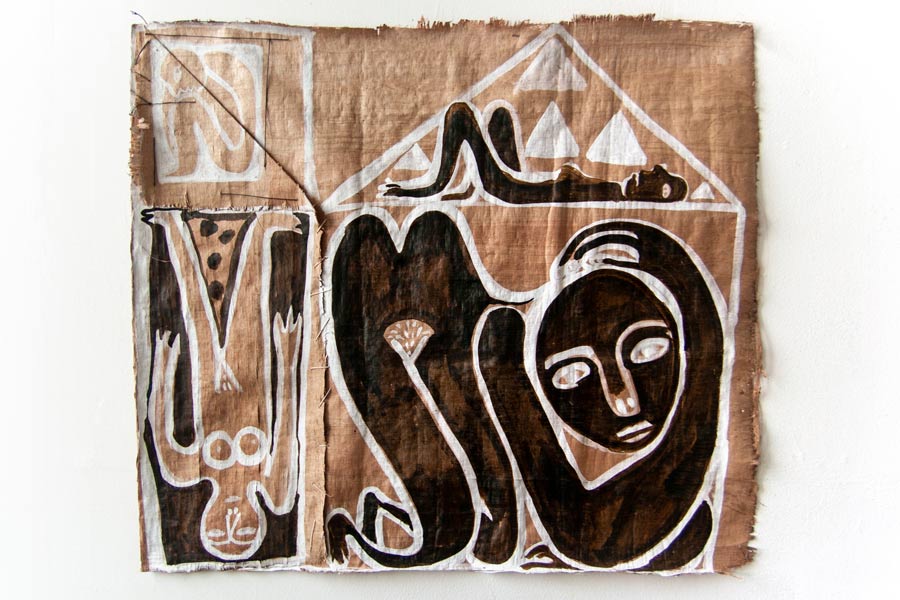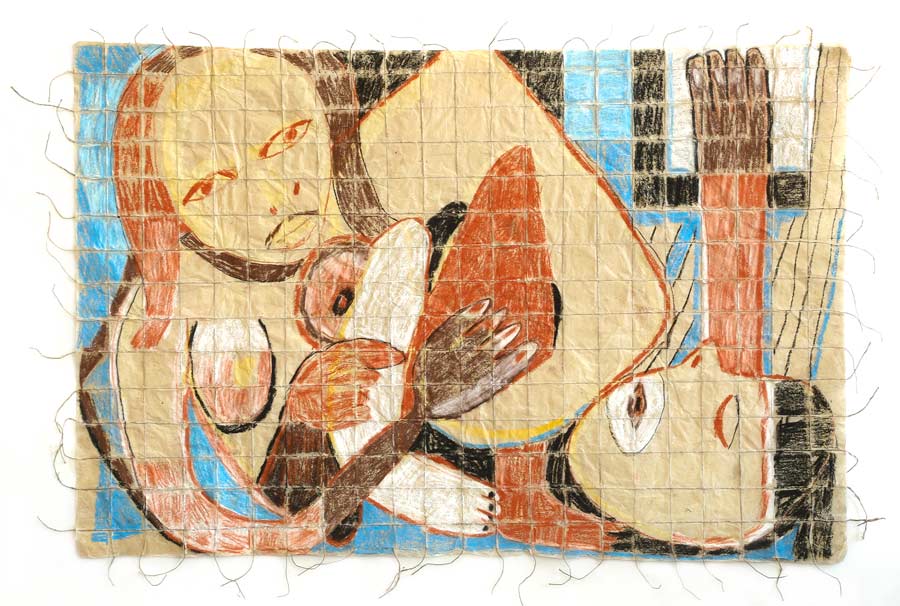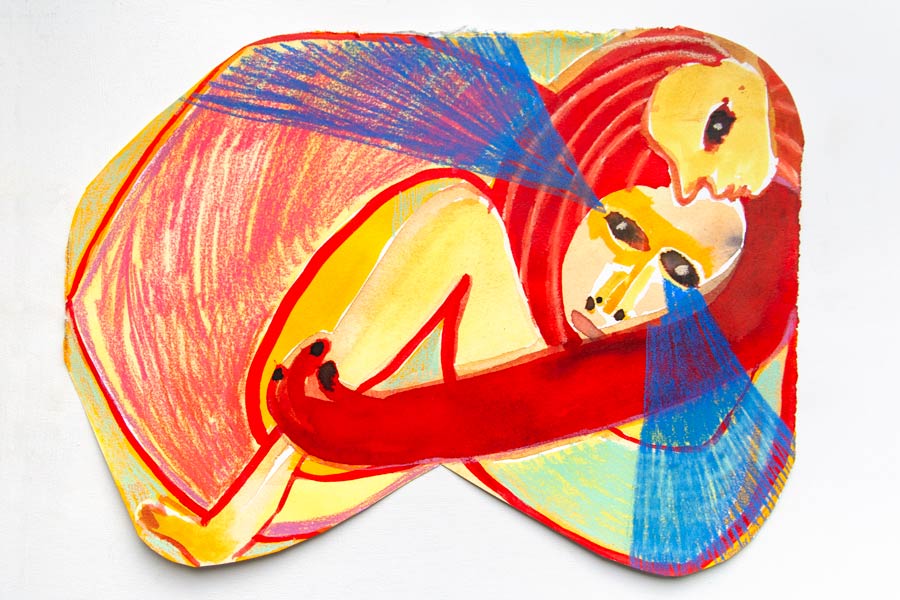Abdu’l-Baha, the leader of the world’s Baha’is after the passing of the prophet and founder of the Baha’i Faith, Baha’u’llah, said that the work of artists helps us “perceive the Divine Reality of things:”
By the power of the Holy Spirit, working through his soul, man is able to perceive the Divine Reality of things. All great works of art and science are witnesses to this power of the Spirit. – Abdu’l-Baha, Paris Talks
Despite these beliefs, we continue to live in a world that values the sciences more as an intellectual discipline – and where the arts get treated as a secondary afterthought. Arts education is usually the first to be cut in school districts and education systems; many parents fear for their children’s futures if they choose to pursue a career in the arts; and governments constantly cut funding to public arts spaces and programs.
Baha’i visual artist and curator Kimia Ferdowsi Kline firmly believes that while scientists help us understand the physical world, it is up to artists to investigate the spiritual world, to mine the Divine through prayer and meditation, and bring the spiritual world into physical reality through works of art that inspire and connect us to each other and to the spiritual world.
Kimia, a Brooklyn-based artist and curator, has explored the discourses of art and spirituality for over a decade. She holds a BFA in painting from Washington University and has earned an MFA in visual arts from the San Francisco Art Institute. Her work has featured in numerous solo and group exhibitions throughout the United States and Europe. She’s participated in several artists’ residency programs; and taught, lectured, and critiqued at various universities and institutions around the country. As an extension of her studio practice, Kimia directs art programming at the Wythe Hotel in Brooklyn, where she has curated over 20 public installations, 15 group shows, and launched an in-house cinema residency program.

Just as scientists help society progress with new cures and discoveries, Kimia believes that artists play a huge role and responsibility in advancing the Baha’i Faith’s spiritual mission of unifying humankind. In this interview, Kimia describes how artists are professionals at process and engaging in the practice of patience and discovery. Artists understand discomfort and ambiguity – they can be brave, courageous, and fail repeatedly until they get their desired outcome. They are professionals when it comes to engaging in conversations, consultation, reflection, and action – all necessary qualities for building a new, just world. Kimia believes that the more artists society produces, the faster we’ll be able to build Baha’u’llah’s kingdom of peace on Earth:
It hath been revealed and is now repeated that the true worth of artists and craftsmen should be appreciated, for they advance the affairs of mankind. – Baha’u’llah, from a tablet to an individual Baha’i.

In our Cloud9 interview, Kimia shares the small steps she believes anyone in society can take to elevate the rank of the arts, so that artists can advance the affairs of humankind. Examples include purchasing art directly from the artist, attending shows and museums, encouraging children to learn a craft, hosting artists in your home, and offering your space for artists to create.
We learn about Kimia’s own personal journey, and how her family’s unique and difficult circumstances informed her identity as a child and as an artist today. Her work of late has been incredibly personal, reflecting inward on her imagination, fragmented memories and stories from loved ones. She shares how motherhood impacted her approach to art in a very practical way – not able to use oil paints, she began to search for other less toxic materials and came across the ancient Egyptian form of paper called papyrus. Describing motherhood as the most extraordinary experience of her life, she tells Cloud9 how pregnancy and motherhood caused her to turn to her mind’s eye and bring forth the images, shapes and colors in her subconscious. She shares how giving birth to her daughter Cora was incredibly liberating and gave her the freedom to take risks and be less apologetic about her work and approach. Together, we explore the role of prayer and meditation in Kimia’s creative process, reflecting on the following words of Abdu’l-Baha:
Meditation is the key for opening the doors of mysteries. In that state man abstracts himself: in that state man withdraws himself from all outside objects; in that subjective mood he is immersed in the ocean of spiritual life and can unfold the secrets of things-in-themselves. To illustrate this, think of man as endowed with two kinds of sight; when the power of insight is being used the outward power of vision does not see. – Abdu’l-Baha, Paris Talks

Kimia describes her curatorial practice as an extension of her studio work, and walks us through her own process of becoming the director of art programming at the Wythe Hotel. She shares how the skills she’s learned as an artist, such as a knowledge of materials, having a good eye, coming up with shows, pairing artists, and organizing a body of work, all transfer to her curatorial practice. She opens up about what it’s like to be in a role that has traditionally been dominated by Caucasian men, and how being a woman of color and member of a religious minority offers a new perspective and diversity to her field. She shares how curators often feature art that is familiar to them, and encourages more people from diverse backgrounds to become curators, as we’d likely see more diversity on the walls and halls of museums and galleries.
We explore the Baha’i principle of the equality of men and women, and learn about how she strives to feature at least 50% female artists in her collections, in direct correlation with this principle. Another Baha’i teaching that Kimia strives to employ in her work as a curator is the oneness of humanity, by including artists of color, indigenous artists, artists that have not gone through traditional modes of training and also artists with disabilities.
We close by exploring the qualities of perseverance and generosity. As artists, there is no clear path, and everyone’s story and journey is unique, so Kimia was encouraged to practice perseverance in the early days of her career and continues to offer this advice to artists starting out. Practicing the quality of generosity has also played a huge part in the development of her career and offered Kimia many confirmations that have led her to where she is today.
As for what’s next for Kimia, her exploration and work as an artist of the ‘Divine sciences’ is constantly growing and evolving. She’s working toward a solo show in Germany in September 2020, another solo show in New York City in the spring of 2021, all while continuing her work at the Wythe Hotel.


Awesome. We see us there. Your work is amazing :-)